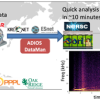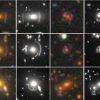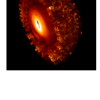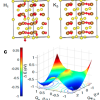Science Vignettes
Near-Real Time Networked Analysis of KSTAR Data
Scientists and engineers have established a near real-time networked analysis of data taken at the KSTAR fusion experiment in South Korea. The framework is using Machine Learning and Artificial Intelligence algorithms running at NERSC for analysis of large data streams.
Read More »
Discovering Hundreds of New Gravitational Lenses
Scientists used neural networks running on Cori to identify 335 new gravitational lens candidates from data collected for in the Dark Energy Camera Legacy Survey (DECaLS) .
Read More »
Machine Learning Tool Could Provide Unexpected Scientific Insights into COVID-19
Working closely with NERSC, a team of materials scientists at Berkeley Lab have created a text-mining tool in record time to help the global scientific community synthesize the mountain of scientific literature on COVID-19 being generated every day.
Read More »
World's first 3-D Simulations of Superluminous Supernovae
For the first time ever, an international team of astrophysicists simulated the three-dimensional (3-D) physics of superluminous supernovae — which are about a hundred times more luminous than typical supernovae. They achieved this milestone using Berkeley Lab's CASTRO code and supercomputers at NERSC.
Read More »
Designing Materials with Tunable Electrical and Magnetic Behaviors
For the first time, the coupling of magnetic spins and atomic dynamics has been fully described in hexagonal iron sulfide (h-FeS), explaining the origin of its fascinating coexistence of metal-insulator, structural, and magnetic transitions.
Read More »












